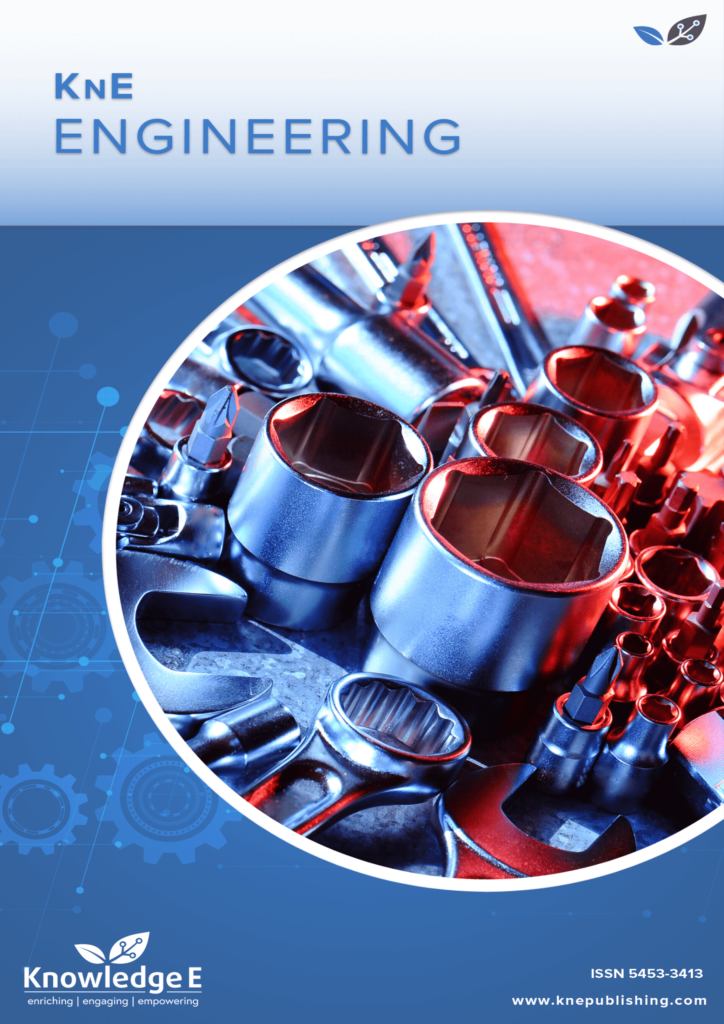
KnE Engineering
ISSN: 2518-6841
The latest conference proceedings on all fields of engineering.
Study of the Strain Resistance During the Tests of the Wheel Steel
Published date:Apr 15 2019
Journal Title: KnE Engineering
Issue title: XIX International scientific-technical conference “The Ural school-seminar of metal scientists-young researchers”
Pages:47–54
Authors:
Abstract:
Torsion tests, as well as a number of other test methods, allow to study the rheological properties of various materials, including properties in hot state. However, existing specimen-loading methods as well as methods of experimental data post-processing do not provide obtaining reliable data on the strain resistance of materials sensitive to the strain rate, at high temperatures for example. The article proposes to use the specimen-loading mode with variable grip’s acceleration. This loading mode with the proposed experimental data post-processing algorithm allows to determine the rheological properties of materials that are sensitive to strain rate accurately. In order to verify the new testing method the finite element simulation problem was solved. In Deform-3D software, the process simulation of torsion testing specimens of JISNCF718 steel with constant temperature value 982∘C was carried out. The simulation results show that it is possible to determine the strain resistance of materials with the knowledge only of the values of torque and the angle of twist, which are read during the test. Thus, the finite element simulation confirmed the theoretical consistency of the proposed method for testing materials that are sensitive to strain rate.
Keywords: hardening curves, strain resistance, torsion test, strain rate sensitivity, finite element simulation
References:
[1] V.L. Kolmogorov, Mekhanika obrabotki metallov davleniem, UPI, Sverdlovsk, 1981.
[2] V.I. Zyuzin, M.Ya. Brovman, A.F. Melnikov, Soprotivlenie deformacii stalej pri goryachej prokatke, Metallurgy, Moscow, 1964.
[3] Yu.N. Loginov, S.L. Demakov, A.G. Illarionov, and A.A. Popov, Effect of the Strain Rate on the Properties of Electrical Copper, Russian Metallurgy (Metally). 2011-3 (2011) 194- 201.
[4] P.I. Polukhin, G.Ya. Gun, A.M. Galkin, Soprotivlenie plasticheskoj deformacii metallov i splavov, Metallurgy, Moscow, 1976.
[5] A.V. Konovalov, Constitutive relations for metals under high-temperature plastic strains, Mechanics of Solids. 44-1 (2009) 98-104.
[6] S.V. Gladkovskii, A.I. Potapov, D.R. Salikhyanov, Rheological Properties and Substantiation of Hot Rolling Regimes of Low- and Medium Carbon Structural Steels, Solid State Phenomena. 284 (2018) 653-661.
[7] M.V. Erpalov, E.A. Kungurov, Examination of Hardening Curves Definition Methods in Torsion Test, Solid State Phenomena. 284 (2018) 598-604.
[8] A. Nadai, Theory of flow and fracture of solids, Volume II, McGraw-Hill Bool Company, Inc., New York, 1963.
[9] D.F. Fields, W.A. Backofen, Determination of strain-hardening characteristics by torsion testing, in: Proceedings of the 6th annual meeting of the society, ASTM Proceeding, 1957, pp. 1259-1272.
[10] S. Khoddam, P.D. Hodgson, Post processing of the hot torsion test results using a multi-dimensional modelling approach, Materials & design. 31-5 (2010) 2578-2584.
[11] J.J. Jonas, F. Montheillet, L.S. Toth, C. Ghoh, Effects of varying twist and twist rate sensitivities on the interpretation of torsion testing data, Materials Science & Engineering. 591 (2014) 9-17.
[12] T. Sheppard, D.S. Wright, Determination of flow stress: Part 1. Constitutive equation for aluminum alloys at elevated temperatures, Metals Technology. 6 (1979) 215-223.
[13] K. Laber, A. Kawalek, S. Sawicki, H. Dyja et.al., Application of torsion test for determination of rheological properties of 5019 aluminium alloy, Key Engineering Materials. 682 (2016) 356-361.
[14] S. Cooreman, D. Lecompte, H. Sol, J. Vantomme„ Identification of Mechanical Material Behavior Through Inverse Modelling and DIC, Experimental Mechanics. 48- 4 (2008) 421-433.
[15] W. Menke, Geophysical Data Analysis: Dicrete Inverse Theory, Palisades, New York, 2012.